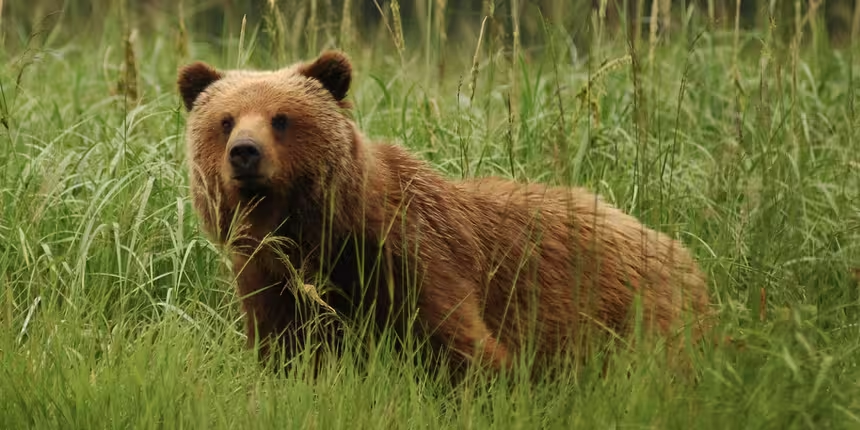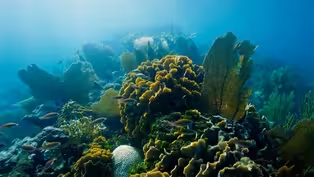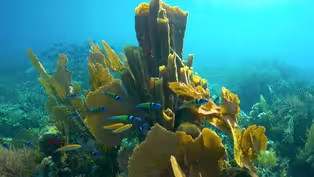
The Sounds of Grouper Spawning
Clip: Season 41 Episode 12 | 3m 35sVideo has Closed Captions
Nassau groupers are solitary most of the year but come together for reproduction.
Nassau groupers are solitary most of the year but come together for reproduction. When they come together to spawn, they use different signals to communicate with each other.
Problems playing video? | Closed Captioning Feedback
Problems playing video? | Closed Captioning Feedback
Major support for NATURE is provided by The Arnhold Family in memory of Henry and Clarisse Arnhold, Sue and Edgar Wachenheim III, The Fairweather Foundation, Charles Rosenblum, Kathy Chiao and...

The Sounds of Grouper Spawning
Clip: Season 41 Episode 12 | 3m 35sVideo has Closed Captions
Nassau groupers are solitary most of the year but come together for reproduction. When they come together to spawn, they use different signals to communicate with each other.
Problems playing video? | Closed Captioning Feedback
How to Watch Nature
Nature is available to stream on pbs.org and the free PBS App, available on iPhone, Apple TV, Android TV, Android smartphones, Amazon Fire TV, Amazon Fire Tablet, Roku, Samsung Smart TV, and Vizio.
Buy Now

Explore More Ways to Watch
Bring the beauty and wonders of wildlife and natural history into your home with classic NATURE episodes.Providing Support for PBS.org
Learn Moreabout PBS online sponsorship- [Narrator] Nassau groupers are solitary most of the year.
Reproduction brings them together.
Some will travel hundreds of miles.
They arrive in December and January when Caribbean waters are coolest.
- [Expert] They start communicating to each other.
They have different signals, different languages, or different words or vowels for the different behaviors that they conduct.
Only when they aggregate to spawn.
- [Narrator] They also communicate with stylized movements and shifting patterns on their skin.
- They look cool already.
They got their stripes and everything, but when it's getting close to spawning, they're like trying on different outfits.
Some turn white, some turn black.
- [Narrator] More groupers arrive.
The chorus swells in volume.
(groupers droning) Some wait on the sea floor, conserving their energy.
- [Expert] They need to synchronize to one or two nights.
Everybody has to have their eggs and their sperm ready for that moment.
They are communicating.
Are we ready to spawn?
Do you think we can spawn now?
- [Narrator] As their numbers grow, they rise from the sea floor each evening as if rehearsing.
As the full moon approaches, the performances become more sophisticated.
- Where the real fun is, is in the courtship prior to spawning.
- [Expert 2] Each has their own suite of behaviors and sounds that all come together into this courtship dance.
- [Narrator] If they are ready, they change into matching costumes.
- As you get closer to spawning, they all choose this tuxedo it looks like to me, black, black, black with a bar over the eye and a white belly.
We call it bi-color phase.
It's like a vaudeville act.
Males fighting over females, making sounds at each other.
- [Narrator] Males wrestle around the females, the noise builds, but night after night, they hold back.
Then one night, the temperature is right.
The moonlight is right.
Most importantly, there's a critical mass of fish.
The chorus reaches a crescendo.
(groupers droning) Then, silence.
Spawning has begun.
Miraculous Comeback: How This Coral Recovered From Bleaching
Video has Closed Captions
Clip: S41 Ep12 | 4m 6s | In October 2019, tragedy strikes the Cayman Crown. But then a miracle occurs. (4m 6s)
Preview of Treasure of the Caribbean
Video has Closed Captions
Preview: S41 Ep12 | 30s | A Caribbean coral reef discovery marks a new chapter in understanding and saving corals. (30s)
Providing Support for PBS.org
Learn Moreabout PBS online sponsorship
- Science and Nature

Explore scientific discoveries on television's most acclaimed science documentary series.













Support for PBS provided by:
Major support for NATURE is provided by The Arnhold Family in memory of Henry and Clarisse Arnhold, Sue and Edgar Wachenheim III, The Fairweather Foundation, Charles Rosenblum, Kathy Chiao and...


